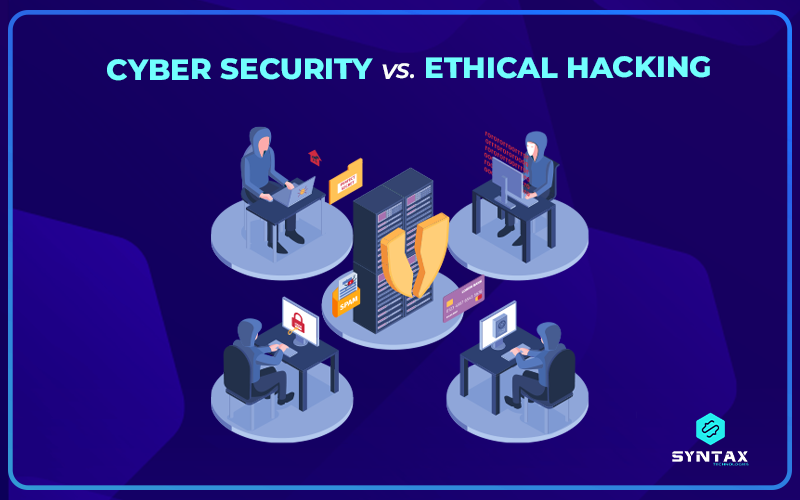Ethical Hacking: Ensuring Security Through Proactive Vulnerability Assessments.In a world where technology evolves at breakneck speed, the digital landscape has become a battleground, where hackers constantly strive to exploit vulnerabilities for their own gain. As the saying goes, “With great power comes great responsibility.” This principle couldn’t be truer than in the world of cybersecurity. In an age where personal, financial, and organizational data are constantly under siege, ethical hackers have emerged as the unsung heroes, safeguarding our digital realm.
Unveiling Ethical Hacking
Ethical hacking, often referred to as “white-hat hacking,” is a noble endeavor where skilled professionals channel their hacking talents and knowledge to identify and rectify security vulnerabilities. In essence, these ethical hackers play the role of the adversary, but with the ultimate goal of strengthening security rather than exploiting it.
The Cat and Mouse Game
The digital world is an ever-evolving ecosystem, with vulnerabilities appearing faster than they can be patched. The infamous Equifax data breach and the WannaCry ransomware attack serve as stark reminders of the havoc that can be wrought when vulnerabilities remain unaddressed. This cat-and-mouse game between ethical hackers and malicious actors underscores the importance of proactive vulnerability assessments.
The Why of Ethical Hacking
1. Finding Hidden Flaws: Organizations can’t fix what they don’t know is broken. Ethical hacking helps identify vulnerabilities before they can be exploited. It’s like fixing the roof before the rainstorm arrives.
2. Regulatory Compliance: Many industries have stringent regulations that require periodic security assessments. Ethical hacking serves as a proactive measure to ensure compliance with these standards.
3. Protecting Your Reputation: A data breach can tarnish a company’s reputation and erode trust. Ethical hacking helps avoid such catastrophic events and protects brand integrity.
4. Cost Savings: Fixing vulnerabilities after a breach can be much costlier than proactive assessment and remediation.
The How of Ethical Hacking
Proactive vulnerability assessments involve several steps:
1. Planning: Identify the scope of the assessment, goals, and specific systems or applications to be tested.
2. Scanning and Enumeration: Ethical hackers use a variety of tools and techniques to identify vulnerabilities, such as port scanning, vulnerability scanning, and enumeration.
3. Exploitation: Once vulnerabilities are identified, ethical hackers attempt to exploit them, mirroring the actions of potential attackers.
4. Analysis and Reporting: The findings are documented and presented to the organization, often with recommendations for remediation.
5. Remediation: The organization addresses the identified vulnerabilities, making necessary patches or changes to strengthen security.
The Role of Ethical Hackers
Ethical hackers are not just tech-savvy individuals with a penchant for hacking; they are skilled professionals with a deep understanding of systems and a strong code of ethics. Their role is pivotal in safeguarding the digital world, and they serve as the frontline defense against malicious intruders.
Wrapping It Up
In a world where our personal and professional lives are intricately entwined with technology, ethical hacking is a beacon of hope, a proactive approach to ensuring security in an increasingly vulnerable digital landscape. By identifying and mitigating vulnerabilities before they are exploited, ethical hackers prove that, indeed, the best defense is a good offense. So the next time you hear of an ethical hacker, remember that they are the unsung heroes ensuring our digital world remains secure and resilient in the face of constant threats.

